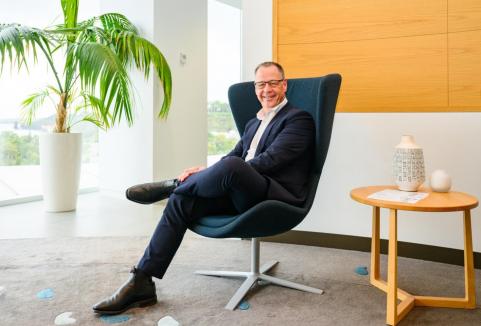The latest winners in the EY Entrepreneur of the Year awards have illustrated the diverse potential of the state’s economy by developing value-adding businesses in sectors including education, oil and gas, agriculture, and construction.


The latest winners in the EY Entrepreneur of the Year awards have illustrated the diverse potential of the state’s economy by developing value-adding businesses in sectors including education, oil and gas, agriculture, and construction.
The four western region winners include former schoolteachers Grant and Sharon Grosser, who established SEQTA Software 10 years ago.
The EY award adds to a string of accolades for Seqta and its founders, including the Business News Rising Stars award last year.
Joondalup-based Seqta now has 75 staff and 430 clients mainly across Australia, but also in Malaysia, East Timor and Indonesia.
Its software enables teachers to complete all of their daily administration, teaching, and learning tasks in a web-based platform.
The founders said the 10-year anniversary made them reflect on how far the business had come.
“There are 75 people who enjoy coming to work, they feel like they are making a difference, and are getting well remunerated – and we did that,” Mr Grosser said.
Mrs Grosser said the commitment of the Seqta team was one of the standout qualities of the business.
“In the beginning nobody got paid properly and it was just hard slog, but they stuck with us. That’s the best part of it,” she said.
While Seqta has created its own niche, Matthew Lamont has built a business that is competing head-on with much larger multinational companies.

SOLUTIONS FOCUSED: Matthew Lamont established DownUnder GeoSolutions in 2003.
He established DownUnder GeoSolutions in 2003 after completing a PhD in geophysics and now leads a business with 200 employees in six offices globally.
The company provides specialist seismic analysis services to oil and gas producers, and has also sold its Insight seismic interpretation software to users in 37 countries.
Mr Lamont acknowledges the current market is tough, but says it suits DownUnder.
“It suits people who have a lower cost base but can match the technology and be innovative and think of better ways to get things done,” Mr Lamont said.
The company is focused on London and Houston for growth.
“We just spent $7 million on a new office and supercomputing centre in Houston and we’re about to do the same in London; they are the big growth stories for us,” Mr Lamont said.
Tony Smith and Andrew Young also compete against much larger companies.

PLUM ROLE: Andrew Young (left) and Tony Smith jointly run grain exporter Plum Grove.
They established Plum Grove in 2003 and currently have 71 staff and annual turnover of almost $600 million.
With backing from Indonesia’s Salim Group, Japan’s Mitsui & Co, and US-based Seaboard, their business has become Western Australia’s second largest wheat exporter (behind grower cooperative CBH Group) and Australia’s fifth largest.
Mr Young said the company had managed to keep a low profile for most of its life, and had benefited from that.
“We weren’t on anybody’s radar so we could get on with what we were doing,” he said.
“The reality is today we’re too big to hide.”
Mr Young emphasised that Plum Grove was not a traditional grain trader.
“We’re not trading grain, we’re accumulating grain,” he said.
“Our shareholders are some of the largest consumers of Australian grain.”
Mr King said Plum Grove benefited from the relationships built with Australian growers.
“The growers still see us as the local guys, not just another multinational.”
Andrew Ryan won his EY award after taking control of a 52-year-old furniture supplier and turning it into an innovative interior fit-out and refurbishment business.

IN CONTROL: Andrew Ryan leads InSite Commercial Interiors.
The key innovation he introduced at InSite Commercial Interiors was to offer a design and construct service, which meant ICI could take on the work traditionally handled by three firms – an interior designer, a project manager, and a head contractor.
Mr Ryan’s strategy has included expanding to the east coast, primarily through national clients that had used the firm in WA, and adding commercial maintenance services.























